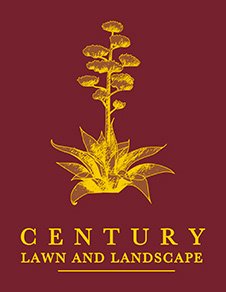Realizing that your lawn has turned brown is one of the last things any property owner wants. If this happened to your lawn in Texas, the first thing you have to do is find out what is causing it. Overfertilization, dehydration, and lawn diseases are common reasons why your lawn has turned brown. Applying too much fertilizer will pull out moisture from your grass, causing it to turn brown and have a scorched appearance. Insufficient water and moisture will also change your lawn's color. Enough water is crucial to maintaining lush and green grass, so you'll want to ensure you're adhering to a strict watering schedule to meet its hydration needs. Lawn diseases like brown patch are also common reasons behind the discoloration of your lawn. Diseases are caused by fungi and can cause patches of brown grass to appear on your turf.
Overfertilization can cause your lawn to turn brown.
Improper fertilization practices can result in the unsightly transformation of your grass from green to brown. The right amount of fertilizer should be applied to your grass to get optimum results, and too much can cause more harm than good. When you overfertilize your lawn, fertilizer burn happens. This occurs because the excess soluble salt content from the fertilizer draws out too much moisture from your grass, essentially dehydrating it. The grass blades will take on a scorched appearance and can wilt. While fertilizer is food for your grass, applying the right amount is still crucial!
Applying too much fertilizer will harm the environment, as the excess product can end up in waterways.
Your grass may be turning brown because of dehydration.

Water is a vital resource that keeps your lawn lush, healthy, and green. So, if you notice your grass is turning into an undesirable brown color, it may simply be suffering from dehydration and need more water! Certain areas on your lawn will turn brown and dry up when parched, and the best thing to do is ensure there is enough moisture to maintain its vibrant green color. Dehydration can easily happen because of poor watering practices, especially during dry spells and hot summer days.
To ensure your lawn receives enough water to stay green, follow a good watering schedule. As a general rule, water should soak the soil at least 4 to 6 inches deep to ensure enough moisture in the root zone. This can be achieved by watering your lawn deeply but infrequently to not only prevent dehydration but also promote deeper root growth.
A Lawn Disease Can Make Your Grass Go From Green to Brown
Lawn diseases are common culprits of brown lawns. If your grass has turned brown, there are different diseases that can cause it. The most common one is brown patch, a fungal disease that thrives in hot and humid conditions. This disease results in circular or irregularly shaped patches of brown grass that get larger as the issue worsens. Eventually, the grass at the center heals and becomes green again, creating a ring of discolored grass blades.
However, there are other lawn diseases that can also cause your lawn to turn brown. Because of this, it's important to have a lawn care professional inspect your turf and diagnose it correctly. This way, the proper treatment is administered to your lawn!
Restore your lawn's lush, green state with our lawn care services. Call us today to sign up!
A brown lawn looks unappealing and can drag down your curb appeal. Our team at Century Lawn and Landscape will help make it lush and green again with our lawn care services! We offer lawn fertilization, lawn disease control, and turf Moisture Manager services to provide your lawn with the right amount of nutrients, eliminate any disease that may be affecting its health, and keep it well-hydrated. Our team provides these services for residential properties in Austin, Bee Cave, Dripping Springs, TX, and surrounding areas. Call us today at (512) 786-1694 to sign up!



Comments (0)
Thanks for your comment!
Thanks for your feedback! Your comments have been successfully submitted! Please note, all comments require admin approval prior to display.
Error submitting comment!
There is a problem with your comment, please see below and try again.